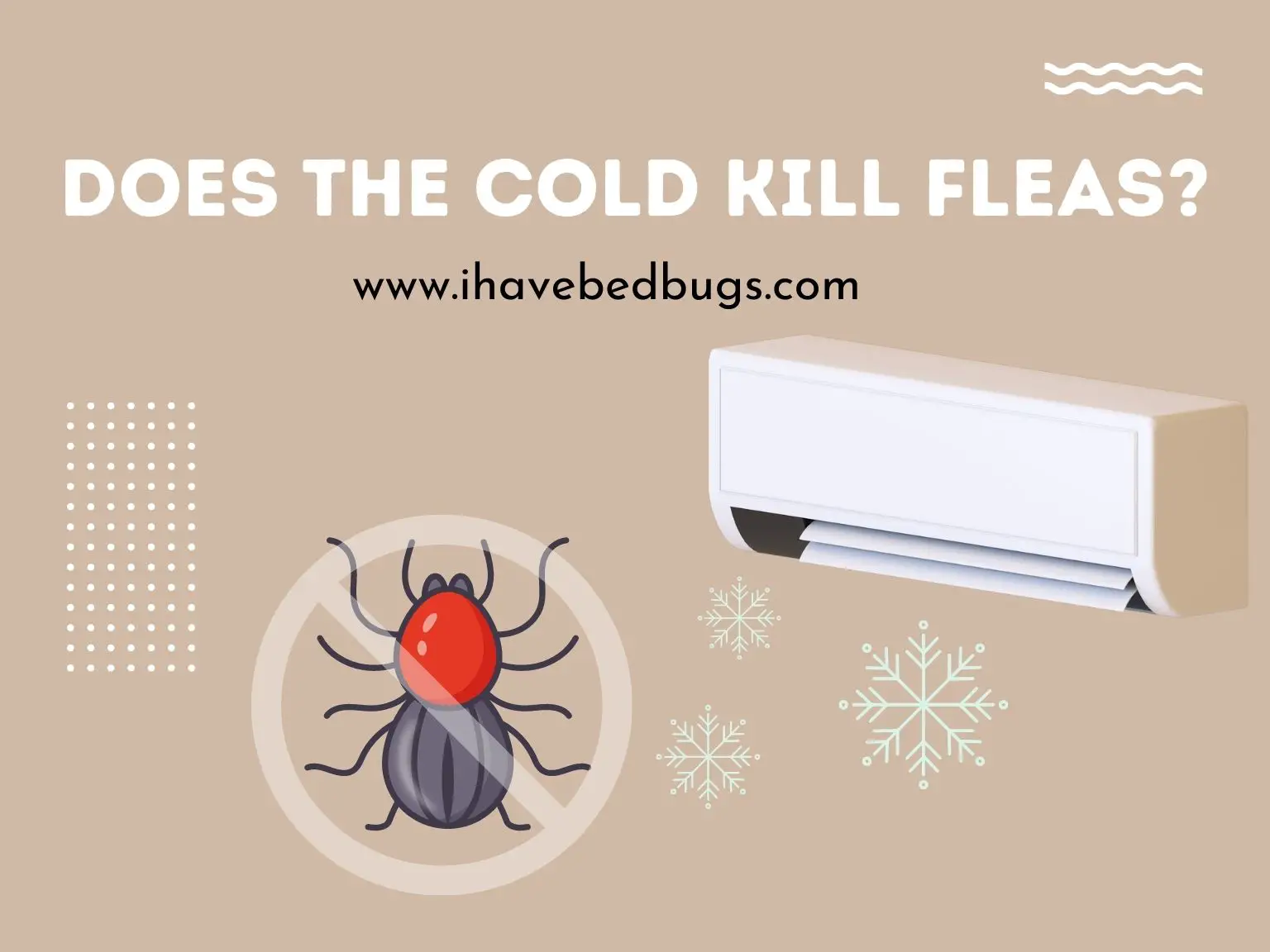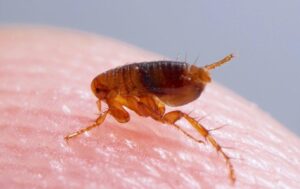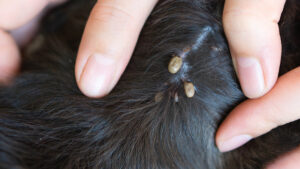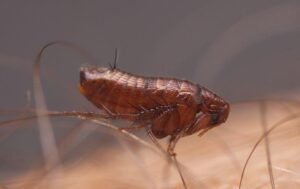Fleas and their infestations are some of the most common and bothersome issues faced by a good portion of today’s pet owners. These insects are notorious for the pain, discomfort, diseases, allergies, and infections they may cause, and fighting them off often feels like a relentless battle in a never-ending war.
Since many insects die in the cold, pet owners often assume that the winter will take care of their fleas. Is that actually true, though? In this brief examination, we’ll be thoroughly studying the species and its response to the harsh winter condition. So, let’s delve straight in.
Does Cold Kill Fleas?
Not necessarily. Fleas will die if they’re exposed to extended freezing temperatures, but the parasites have developed survival methods even then.
Understanding the Fleas
Before getting to killing the fleas, it’s important to understand what a flea is and what the flea’s life cycle looks like.
What Is a Flea?
Fleas are tiny, flightless insects with flattened bodies and are usually reddish-brown. Despite being flightless and wingless, fleas have incredible jumping powers where they can do an 8-inch vertical leap.
As for their feeding patterns, adult fleas are parasites that feed on blood. In fact, adult females consume roughly 15 times their body weight of blood every single day. However, developing larvae will feed on organic debris like flea eggshells, other flea larvae, and excreted, partially digested blood known as flea dirt.
Flea Hosts
Because fleas are parasites, they need hosts for survival. The flea’s warm-bodied hosts of choice are usually animals, but the parasites will resort to human hosts if animals are unavailable. To locate their potential hosts, fleas use breathing, movement, body heat, and vibrations produced by the host.
Flea Threats
Besides being a major discomfort, fleas carry serious threats to both humans and pets.
Flea threats to a pet are plenty, and they vary in seriousness. For starters, fleas cause severe discomfort and will leave your pet feeling miserable. This will often include lots of biting, scratching, chewing, and overall restlessness. Moreover, the pests can be responsible for Flea Allergy Dermatitis (FAD), which is a common skin condition in animals.
Additionally, severe infestations can cause your pet to develop anemia. Since fleas feed on your pet’s blood, severe infestations will lead to significant blood loss and will consequently result in anemia. Small, young, and debilitated adult pets are more susceptible to flea-induced anemia.
Finally, the parasites can play a significant role in transmitting tapeworm infections to your pets.
Fleas are also dangerous to humans. While humans won’t be a flea’s preferred host, fleas still do feed on human blood. In doing so, the fleas carry significant risks to their human hosts. For starters, some humans are allergic to flea bites, and the allergic reaction will vary in severity from one person to the other. Usually, the allergy will appear in the form of raised, small red or purple lesions.
Moreover, humans can contract typhus from a flea bite; Flea Typhus and Murine Typhus are both transmitted via flea bites. Similar to flea bites in animals, flea bites in humans can result in tapeworm infections. Last but not least, fleas can transfer the bubonic plague when they bite humans.
Flea Life Cycle
A typical flea life cycle usually consists of four main stages: egg, larva, pupa, and adult.
To start their life cycle, fleas first need to find a host. Then, after having their blood meal, the adult fleas will start mating, and the females will lay eggs. The eggs then hatch into larvae, which move, feed, and develop to spin their cocoons and enter the pupa stage.
The pupa will remain in its cocoon and emerge as an adult flea only when there’s a clear presence of a potential host; they only leave when they know a blood meal is readily available. In the meantime, the cocoon protects the pupa from environmental conditions, insecticides, and repellents.
Once the hosts are located and the adult fleas emerge from their cocoons, the flea’s life cycle starts all over again. The now-adult fleas will have their blood meal, mate, lay eggs, and set off the new generation of fleas.
Flea Infestation
Flea infestations are fast and serious; within 24 to 36 hours of biting your pet, the female flea will start laying eggs. In addition, a single adult female flea can lay up to 10,000 eggs in 30 days.
Signs of a Flea Infestation
There are three main signs to look for if you suspect a flea infestation. The first sign will appear on your pet. A pet infested with fleas will exhibit red bumps, hair loss, and lots of scratching, biting, and chewing.
The second sign to look for is flea dirt. As mentioned earlier, flea dirt is the waste material excreted by an adult flea. It’s often reddish-black because it consists of semi-digested blood. And it’ll appear in the form of small black specs scattered through the carpets and your pet’s space.
The third and last thing to look for is flea eggs and larva. These are usually very hard to find because they’re well hidden by fleas. However, try searching for them behind your furniture, in floor cracks, or in areas where your pet sleeps.
How to Get Rid of Fleas?
Fleas are quite challenging to eradicate due to their physical resilience and speed of proliferation. Moreover, the pests can survive in empty spaces and easily find alternative hosts if you take your infested pet away. If fleas have infested your dog or any of your pets, getting rid of the parasites will entail treating both your pet and your entire house.
Pet Flea Treatment
There are a few treatment options that you can try with your household pets if they’ve been infested with fleas. So let’s have a look at them.
Collars and Topicals
Some collars and topical products act as flea repellants. These will kill the fleas before they get the chance to bite your pet.
Systemic Medication
Systemic oral medications are treatments that enter your pet’s bloodstream through ingestion. These are especially effective because fleas feed on your pet’s blood, so feeding on medicated blood will instantly kill the parasites.
Sprays and Spot-on Products
Non-toxic sprays and spot-on products act to kill the fleas upon contact. These are a great option if your pets are still young or if they struggle with bath time.
Shampooing, Combing, and Grooming
Shampooing, combing, and grooming is a more manual method of eliminating fleas. Use non-toxic flea shampoo for bathing your pet, making sure to leave it on for a few minutes before rinsing it off. This will ensure that all the fleas are killed before rinsing.
Investing in a flea comb will also go a long way in fighting the parasites off. These combs are designed to pick the fleas out of your pet’s hair, and regularly combing your pet out has proven effective in reducing the flea population. Be sure to drop the insects picked by your flea comb into soap water to kill the parasites on contact.
Home Flea Treatment
When treating your home against flea infestation, your goal is to kill fleas at all their development stages. Therefore, you’ll be targeting adult fleas, flea eggs, flea larvae, and flea pupates.
For ongoing flea control, be sure to vacuum regularly as this removes flea eggs and dirt. Additionally, frequently launder all your pets’ beddings as well as your furniture and human beddings. Finally, treat your home with non-toxic flea sprays. Areas to focus on should include the places where your pets sleep and play.
How to Prevent Fleas?
As always, preventing a problem is much easier than fixing it, and the case is no different with flea infestation. Fleas are exceptionally tricky because they reproduce very fast. Before you realize it, they’ll be everywhere.
The first prevention step would be to bathe and groom your pet frequently. This will also help you detect any flea presence early on. Additionally, be very cautious of the animals that your pet comes in contact with, as well as the amount of time they spend outdoors. This is because fleas may choose wild animals as their hosts as well. Hence, your pet might catch some of these parasites when outside.
Moreover, always keep a clean environment. Frequently vacuuming, cleaning the beddings, and containing any potential flea transmission will go a long way in preventing infestations.
Another preventative measure lies in never stopping the flea treatments. You should never stop your pet’s flea treatments during the winter, as the cold won’t be able to fight the fleas on its own.
Fleas and the Cold
While you may expect the cold winter months to prevent fleas from infesting your house or pets, it’s unfortunately not quite the case. Fleas tend to have a high tolerance to the cold, and their life cycle helps them survive the winter months.
When the weather becomes too harsh for the parasites, they can simply go into dormancy, waiting for the harsh conditions to end. This is especially true for earlier stages of development, particularly the pupa stage. Moreover, the cold will most often drive the fleas to seek shelter in your warm home.
While fleas may slow down a bit in the cold outdoors, they’ll quickly regain their activity once they’re in your warm indoors.
Fleas’ Ideal Weather Conditions
Ideally, fleas thrive in warm and humid environments. A 70 to 80F temperature and 70% humidity present the optimal flea thriving conditions. Colder, drier temperatures will slow the fleas down but won’t necessarily kill them.
At What Temperature Will Fleas Die?
Usually, fleas in the outdoors will die near-freezing temperatures if they stay there for an extended period. However, the frost won’t kill all fleas. For example, immature stages of fleas that develop in freeze-protected wildlife dens will make it through the winter. Similarly, fleas living on warm-bodied hosts and those living in the warm indoors will also survive the cold temperatures.
Frequently Asked Questions
At What Temperature Do Fleas Die Inside?
Fleas will almost never die in indoor temperatures. As we mentioned earlier, fleas will only die from the cold if they’re subjected to freezing temperatures for extended periods. That said, it’s almost impossible for your home or indoor space to meet these conditions. That is, indoor temperatures that are suitable for you are also suitable for the stubborn parasites.
Can Dogs Get Fleas in Winter?
Unfortunately, they can. The cold weather won’t prevent the fleas from infesting your pet. However, your pets are less likely to get fleas during the winter.
Bottom Line
Fleas are parasitic pests that can infest your pet and home. They’re a nightmare to get rid of and will carry some serious risks to both you and your pet. However, if you were waiting on the cold to rid you of your flea curse, you should probably stop waiting. While consistent freezing temperatures can kill fleas, most fleas have developed survival mechanisms to get through the winter.
Once you notice an infestation, act fast. Fleas spread very quickly, and waiting will only serve to amplify the problem.
References
- https://www.adamspetcare.com/expert-care-tips/flea-and-tick-pest-education/can-dogs-get-fleas-in-winter
- https://www.abchomeandcommercial.com/blog/does-cold-weather-kill-fleas/
- https://fleascience.com/flea-encyclopedia/life-cycle-of-fleas/adult-fleas/how-long-do-fleas-live-for/at-what-temperature-do-fleas-die/
- https://goldenretrieverlove.com/does-cold-weather-kill-fleas/
- https://www.petmd.com/dog/parasites/do-fleas-survive-winter





